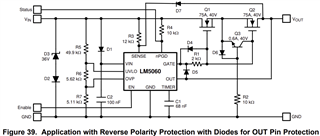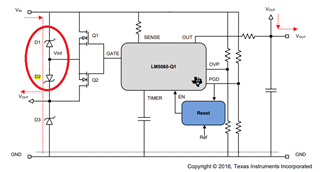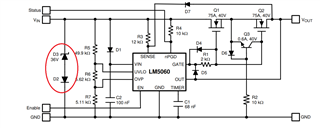Other Parts Discussed in Thread: LM76202-Q1, LM74800-Q1, TIDA-01167
Hi,
We are going to use LM5060Q1MMX/NOPB for reverse polarity protection with the diodes options as shown in the snapshot given below. I am going through the datasheet but there is no specs defined for the diodes except the Zener diode that can be selected based on the application.
Datasheet does defines that what are these diodes used for but there is no explanation about how much the rating they should have or like how much the forward current one should supports. Is there any other document that is defining this circuit in more detail?

Kind regards,
Muhammad Awais
Thanks,
Mat




